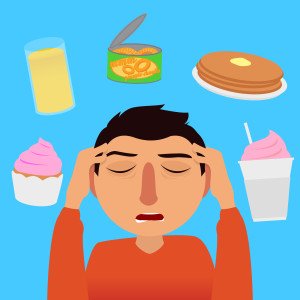Blood Glucose 101: Part One
 If you have diabetes, keeping your blood glucose in a healthy range can be challenging. But it is worth the effort, because blood glucose control will help you prevent or delay the onset of diabetic complications such as eye, nerve, and kidney disease. Having your blood glucose levels in control will also help you feel your best, have fewer headaches and get less fatigued.What is the difference between blood glucose and blood sugar?There is no difference. Healthcare professionals often say blood glucose because glucose is the type of sugar that is in the blood.What makes blood glucose high?Carbohydrates raise blood glucose more than any other nutrient. The foods with the most carbohydrates are...
If you have diabetes, keeping your blood glucose in a healthy range can be challenging. But it is worth the effort, because blood glucose control will help you prevent or delay the onset of diabetic complications such as eye, nerve, and kidney disease. Having your blood glucose levels in control will also help you feel your best, have fewer headaches and get less fatigued.What is the difference between blood glucose and blood sugar?There is no difference. Healthcare professionals often say blood glucose because glucose is the type of sugar that is in the blood.What makes blood glucose high?Carbohydrates raise blood glucose more than any other nutrient. The foods with the most carbohydrates are...
- Starches, including grains, starchy vegetables, and beans. Popular examples include...
- Bread, pancakes, rice, pasta, oatmeal, dry cereal, potatoes, sweet potatoes, peas, corn, black beans, kidney beans
- Fruits, including fresh, frozen, canned, and dried fruit, along with fruit juices. Specific examples include...
- Bananas, berries, dates, raisins, applesauce, orange juice, apple juice
- Milk and yogurt, including milk substitutes. For example...
- Low-fat, nonfat, and whole milk; plain and flavored yogurt, evaporated milk, soy milk
- Sweets and treats, including sugary beverages, snack bars and condiments -- just like...
- Regular soda, sports drinks, honey, jam, syrup, sugar, granola bars, cookies, pudding, BBQ sauce, gravy
What else can make your blood glucose levels high?
- Not taking your medicine
- Infection or other illness
- Menstrual cycle
By Jill Weisenberger, MS, RDN, CDEFor More Information:
- National Diabetes Information Clearinghouse
- American Diabetes Association
